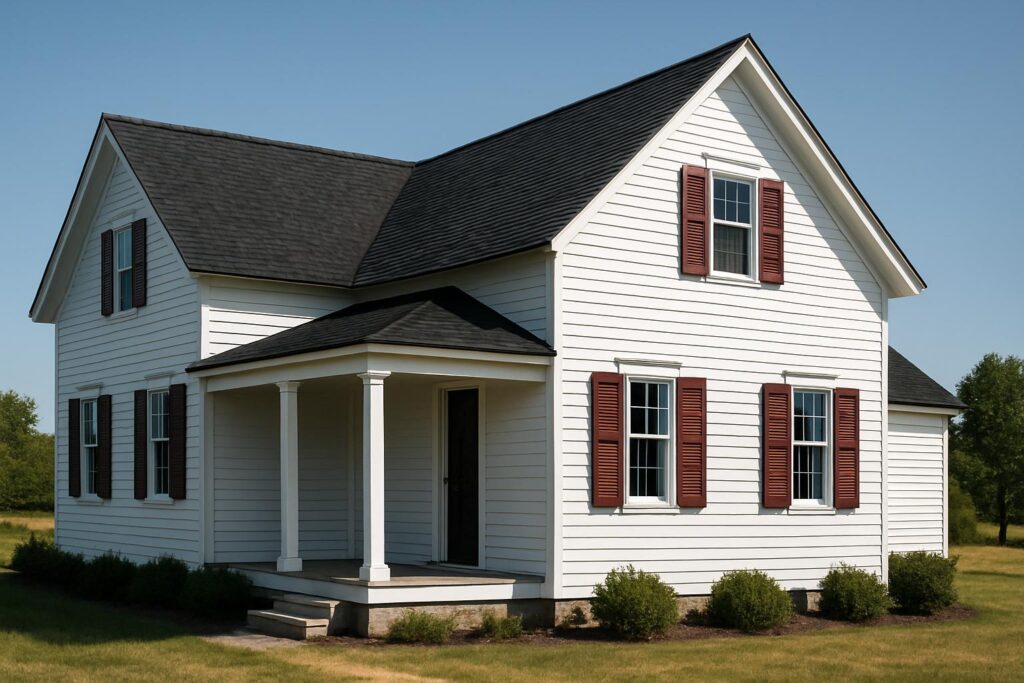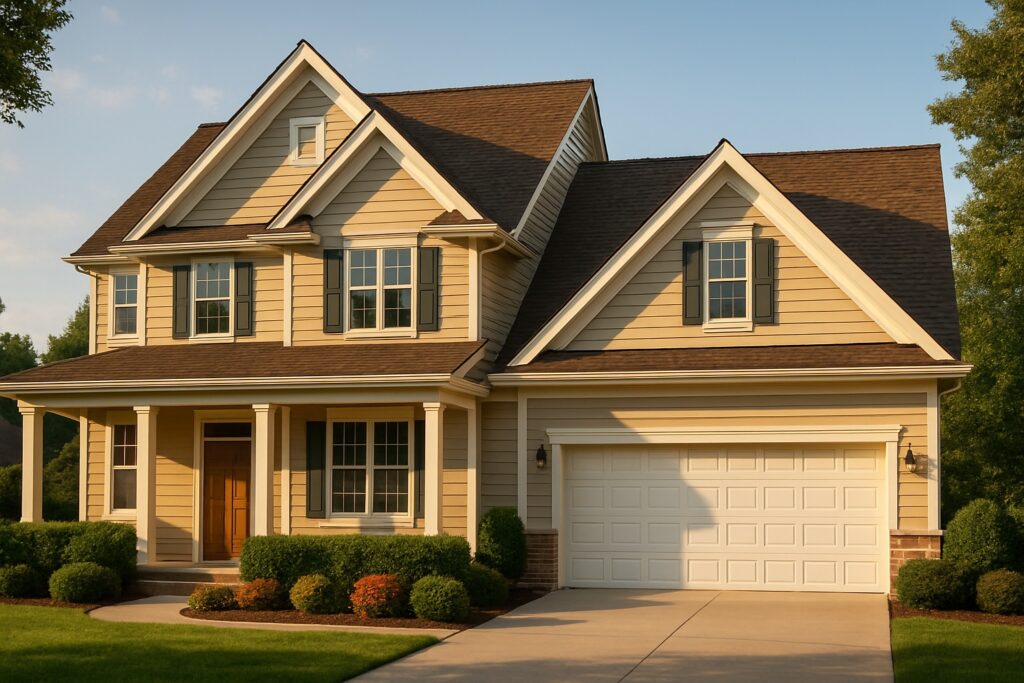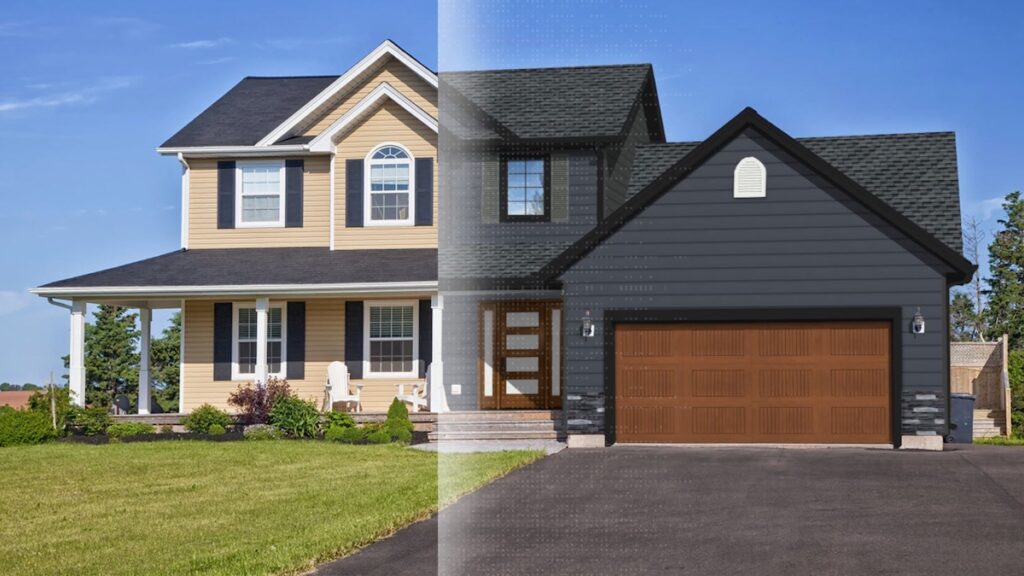TLDR
Choosing the right garage paint isn’t just about color—it’s about curb appeal, durability, and getting the most out of your space.
Exterior garage doors look best in timeless colors like matte black, charcoal gray, and sage green.
Interior garage walls benefit from light, reflective shades like bright white or taupe in a semi gloss finish.
Semi gloss is the ideal finish for both doors and walls—durable, easy to clean, and moisture-resistant.
Match garage paint colors to your home’s style (modern, traditional, farmhouse) for a cohesive look.
Be mindful of attached vs. detached garages—each offers different design freedoms.
Expect to spend $150–$600+ depending on surface area, materials, and whether you DIY or hire out.
Prep work—cleaning, sanding, priming—is key to long-lasting results.
🎨 Want to see what your garage could look like before you paint?
Use our Garage Visualizer Tool to test colors on your actual home.
Why Garage Paint Color Matters More Than You Think
When it comes to improving curb appeal and extending the life of your exterior surfaces, garage paint plays a more important role than most homeowners realize. Not only does the right paint color give your home a visual boost, but it also protects the garage wall and doors from sun exposure, moisture, and general wear.
A freshly painted garage can increase your home’s resale value, improve energy efficiency, and create a more cohesive design when paired properly with your siding, trim, and front door.
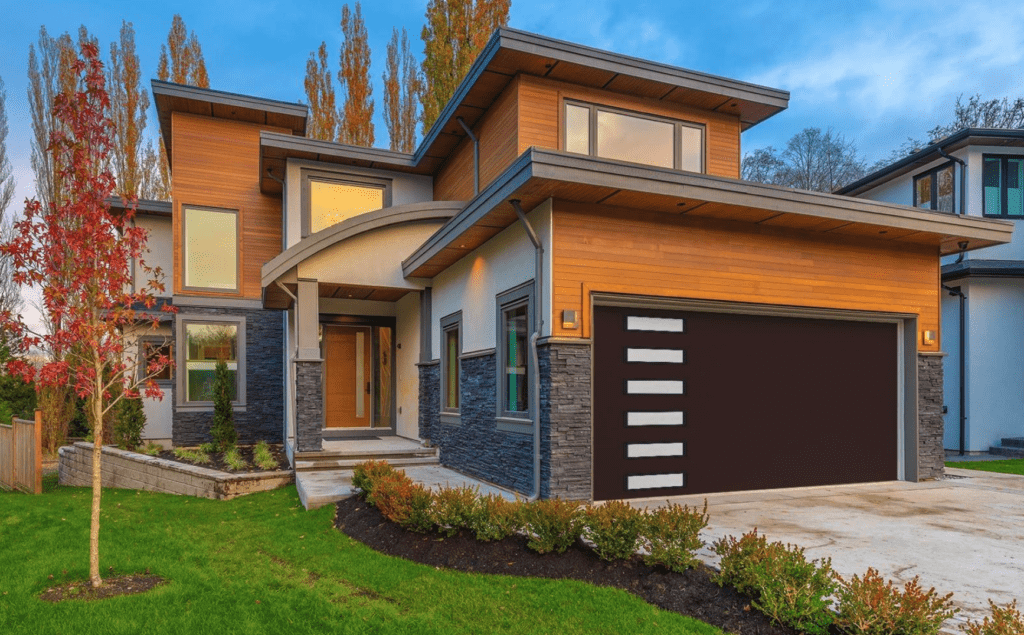
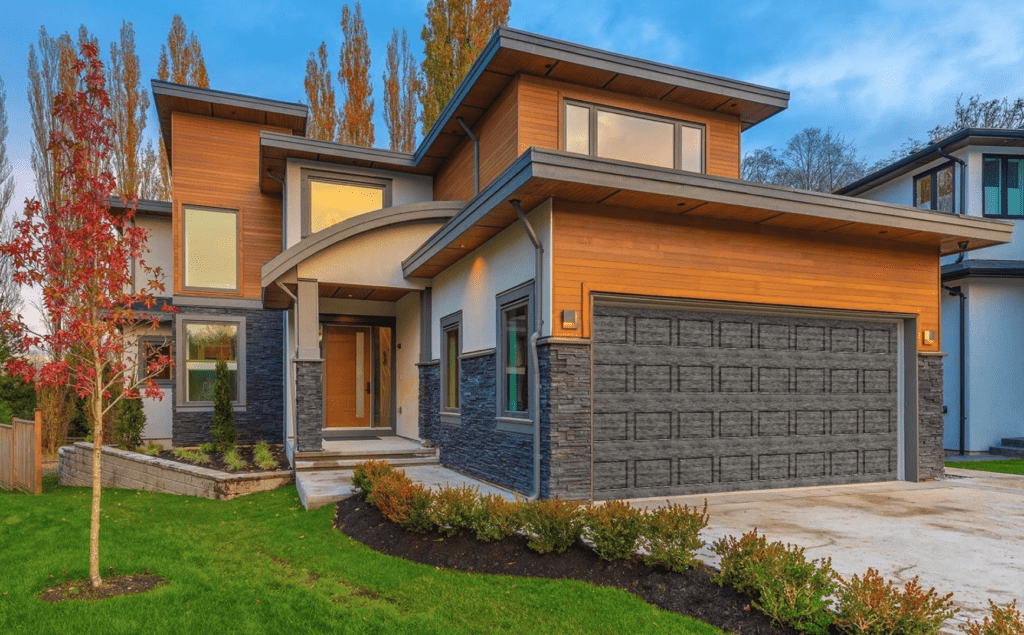
Top Exterior Garage Door Paint Colors in 2025
Your garage door often takes up 30% or more of your home’s front elevation, making it a dominant element of your exterior design. Choosing the right paint color is about more than just personal taste—it’s about finding a shade that complements your home’s architecture and boosts your property’s value.
Popular Garage Door Paint Colors:
Matte Black – Ideal for modern and contemporary homes. Sleek and dramatic.
Charcoal Gray – A versatile neutral that hides dirt and adds depth.
Navy Blue – Great for traditional or Cape Cod-style homes.
Sage Green – Earthy and understated. Works beautifully with stone and beige siding.
Creamy White – Clean and timeless. Especially suited for farmhouse and colonial styles.
Remember to factor in the color of your siding, trim, and front door. The goal is a cohesive palette that makes your garage door a feature—not a distraction.
How to Choose the Right Finish for Garage Paint
Not all paints are created equal—and when it comes to garage walls and doors, choosing the right finish is as important as choosing the right color. Flat or matte paints may be trendy indoors, but in the garage, they’re a magnet for dust, handprints, and scuffs. A semi gloss or satin finish, on the other hand, offers a balance of durability and cleanability, making it ideal for high-traffic, functional spaces.
For garage doors, consider an exterior-rated gloss or satin. These sheens reflect more light and resist fading from UV exposure. On garage walls, semi gloss remains the top choice due to its resistance to moisture, mold, and everyday wear. It also makes wiping down workbenches or dirty handprints much easier. If your garage sees a lot of activity, your finish should be ready for it.
Garage wall paint doesn’t have to be an afterthought. Whether you’re using the space as a workshop, gym, or just for storage, the right wall color can brighten the room and make it feel more functional.
Recommended Garage Wall Paint Colors:
Light Gray – Hides smudges while keeping the space bright.
Beige or Taupe – Warm, welcoming tones for livable garages.
Bright White – Reflects light best. Ideal for darker garages.
Use semi gloss or satin finishes for garage wall paint—they’re easier to wipe clean and resist mildew in humid spaces. Avoid flat or matte paint as it will absorb stains and scuffs quickly.
Should You Paint the Inside of Your Garage?
Many homeowners focus solely on the garage door, forgetting that a fresh coat of paint inside the garage can transform it from a dingy catch-all into a clean, usable space. Painting garage walls improves visibility, reflects light for better safety, and makes the area feel more inviting.
If you use your garage as a gym, workshop, or entryway, lighter colors like white or light gray can help maximize natural and artificial lighting. And if your garage is uninsulated or prone to moisture, using mildew-resistant semi gloss paint can add longevity and cleanliness to your space. Don’t forget the ceiling and trim—painting those helps complete the clean, polished look.
Matching Garage Colors to Home Styles
Your garage should never look like an afterthought. Here’s how to align your garage paint with your home’s architectural style:
Colonial or Traditional:
Best colors: Cream, navy, deep red
Accent with white trim and classic hardware
Modern or Contemporary:
Best colors: Black, graphite, greige
Look for smooth textures and minimalist detailing
Craftsman or Farmhouse:
Best colors: Olive green, tan, rust
Wood-grain doors and warm tones work best
Visual balance matters—your garage paint color should enhance your existing siding or stonework, not fight with it. When in doubt, use a visualization tool to preview combinations.
Garage Paint Ideas for Attached vs. Detached Garages
Your garage’s location plays a big role in how it should be painted. For attached garages, continuity is key. Choose garage wall and door paint colors that harmonize with your home’s exterior palette to create a seamless transition. Matching or complementing your siding and trim helps the garage feel like a natural part of the home’s architecture.
Detached garages, on the other hand, offer more design freedom. You can get creative with bolder paint color ideas—especially if the structure sits further back on your property or near gardens, fencing, or landscaping elements. This is a great opportunity to introduce contrast while still staying visually consistent with your property’s theme.
Mistakes to Avoid When Painting Your Garage
Avoid these common pitfalls to make sure your garage paint job lasts and looks great:
Using interior paint on exterior garage doors – Always use paints labeled for outdoor use.
Skipping primer – Especially critical for metal or stained surfaces.
Using flat paint – Choose semi gloss for durability and washability.
Not cleaning before painting – Dirt, mildew, or old grease can prevent adhesion.
Mismatched finishes – Stick to the same sheen for consistency across garage wall and trim.
How to Prep Garage Walls and Doors Before Painting
A great paint job starts with the right prep. Whether you’re repainting a garage wall or tackling a steel door, skipping preparation can lead to peeling, poor adhesion, and uneven coverage. Start by thoroughly cleaning all surfaces using TSP cleaner or a degreasing solution to remove oil, dust, and residue.
For garage doors, sand any peeling or rusted areas, and always apply primer if painting over bare metal or switching from oil-based to latex paint. Garage walls with existing paint may need patching, sanding, and caulking before the first coat. Proper prep ensures your new garage paint adheres smoothly and lasts for years—not months.
Garage Paint Costs and Common Materials: What to Expect
Before diving into your next garage painting project, it helps to know what materials you’ll need—and what it’s likely to cost. Whether you’re hiring a pro or tackling it yourself, garage paint projects are some of the most cost-effective upgrades you can make to your home’s exterior.
Average Cost to Paint a Garage:
Garage Door (single): $100–$200 for DIY / $250–$600 for pro service
Garage Walls (interior, 2-car garage): $150–$300 for materials / $500–$1,200 for professional labor
Primer + paint bundle: $60–$120 depending on quality and brand
Prep materials (tape, drop cloths, cleaner, sandpaper): $30–$75
These costs can vary based on paint type, surface condition, and whether you’re painting wood, metal, or vinyl garage walls and doors.
Most Common Garage Wall Paint Types:
Latex-based semi gloss: Easy cleanup, mildew resistant, and great for high-traffic zones
Acrylic exterior paint: Ideal for garage doors that face direct sunlight
Epoxy paint (for concrete or floor spill zones): Durable, stain-resistant, and waterproof
When painting a garage wall, always factor in moisture resistance and cleanability. Semi gloss latex paint is preferred because it doesn’t trap dust or oil and can be wiped down easily after projects, repairs, or car maintenance.
Tools & Products You’ll Need
Before you get started, gather the right tools for the job:
Exterior latex paint (for garage doors)
Semi gloss or satin finish paint (for garage wall paint)
High-density foam rollers for smooth applications
Painters tape and drop cloths
TSP cleaner or degreaser for prep work
Paint primer if you’re covering metal or old oil-based layers
Recommended Brands:
Benjamin Moore Aura Exterior
Behr Ultra Exterior Satin Enamel
Sherwin-Williams Duration Home
Seasonal Considerations for Garage Painting
Timing your garage paint job right ensures proper adhesion and finish quality.
Spring and Fall
Ideal temperatures (10°C to 25°C)
Lower humidity helps paint cure evenly
Summer
Avoid peak heat hours
Paint early morning or late afternoon
Winter (for garage walls only)
Heat the space to above 10°C if painting inside
Use low-VOC options to prevent fumes in closed garages
Visualize Before You Paint
Not sure what color works best? Use the Renoworks Visualizer Tool to test different garage paint colors against your home exterior. See how your garage wall and door combinations look with your exact siding and trim.
This eliminates guesswork and gives you confidence before picking up a brush.
Final Thoughts: Painting Your Garage With Confidence
Garage paint isn’t just a finishing touch—it’s a design and durability upgrade. Whether you’re freshening up the garage wall, repainting your door for curb appeal, or experimenting with bold new tones, make choices that enhance both style and function.
Want to see how your garage could look with different colors and finishes? Try our Garage Paint Visualizer and bring your ideas to life before you start your next project.
Frequently Asked Questions
Q: Should my garage door match my front door?
A: It depends on your style preference. Matching can unify your façade, but contrast (like black garage paint and a wood door) can be striking too.
Q: How often should I repaint garage walls?
A: Interior garage wall paint can last 5–7 years. Touch up when you notice stains, scuffs, or peeling.
Q: Can I use semi gloss on garage doors?
A: Yes, but most experts recommend a satin or exterior gloss for durability and shine.
Q: What paint color hides dirt best on garage doors?
A: Charcoal gray, taupe, and mid-tone neutrals are excellent at hiding dirt and fingerprints.
Q: What is the best type of paint for garage walls?
A: Use high-quality semi gloss latex paint for wipeability and mold resistance.
Q: What kind of paint should I use for a concrete garage wall?
A: Use a high-quality masonry or epoxy paint. These are designed to bond with concrete and resist moisture, stains, and chipping.
Q: Is it worth using primer on a garage wall before painting?
A: Yes. Primer helps the paint color adhere properly and last longer—especially on unfinished drywall, raw wood, or patched areas.
Q: What’s the difference between satin and semi gloss finishes in a garage?
A: Both are good options, but semi gloss is more durable and easier to clean—ideal for garage wall paint in high-traffic or utility areas.
Q: Can I paint over old garage paint without sanding?
A: You should at least scuff the surface lightly with sandpaper and clean it well to ensure proper adhesion, especially if the old garage paint is glossy.
Q: Should the garage walls and ceiling be the same paint color?
A: Not necessarily. Many homeowners use a bright white ceiling paint to reflect more light and a neutral tone like gray or beige on the garage wall.
Q: How do I match my garage door color to the rest of the house?
A: Look at the undertones in your siding and trim. Use complementary shades from the same color family or a contrasting neutral like black or gray.
Q: What’s the most popular paint color for a garage door in 2025?
A: Charcoal gray and matte black are trending for modern homes, while sage green and navy blue are top choices for traditional and farmhouse styles.

HOME VISUALIZER TOOL
Still Imagining? Start Designing.
Visualize your home — for free. Instantly explore siding styles, colors, and renovations with just one photo. No forms. No pressure. Just results.





